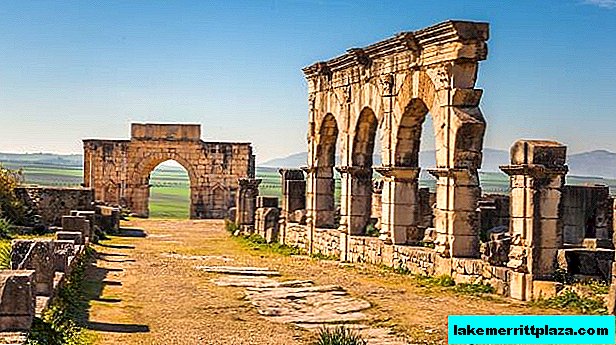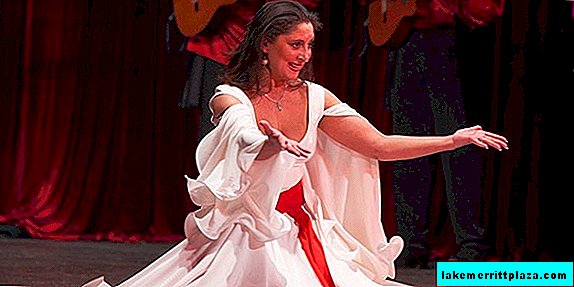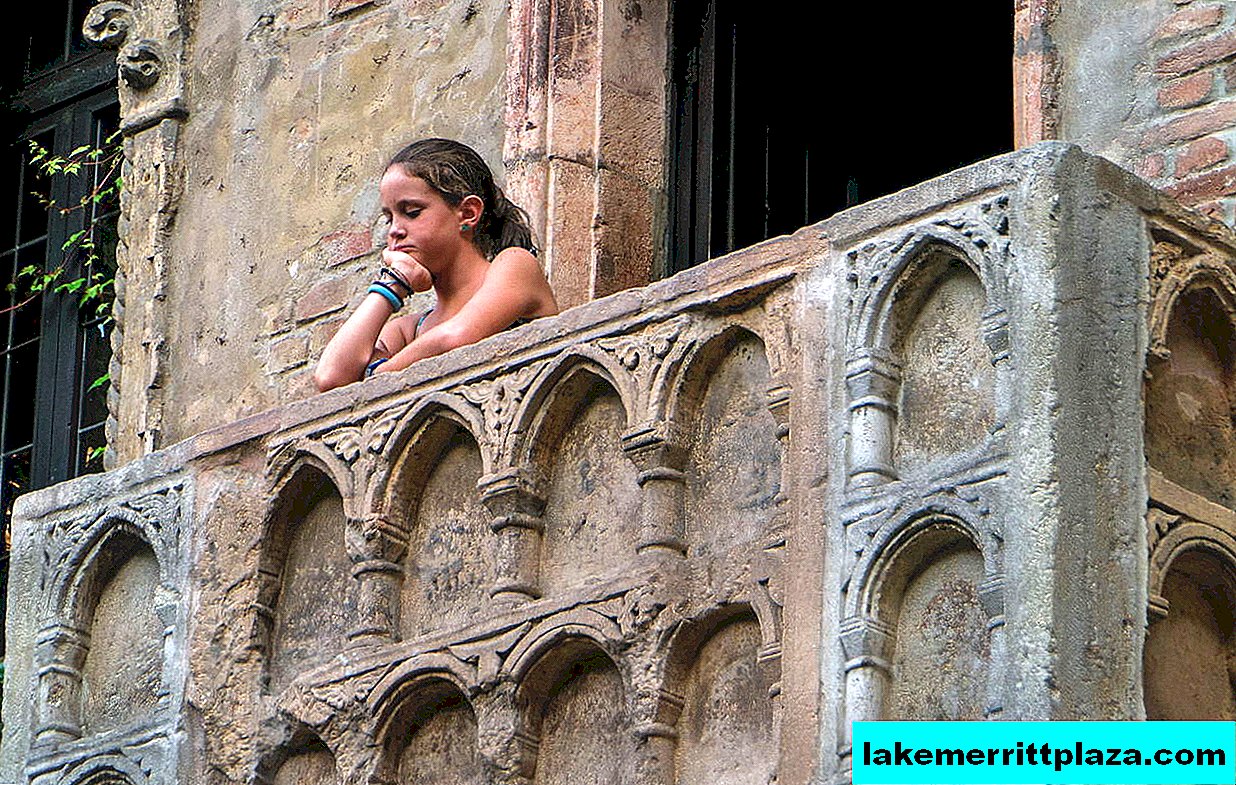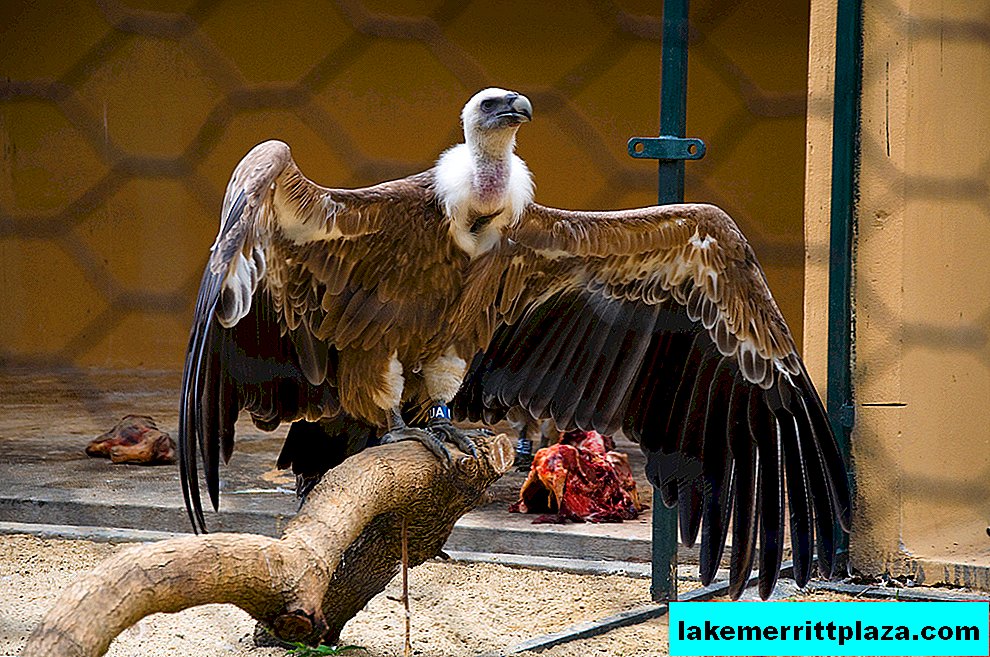Umbria, the capital of which is the city of Perugia, is the only region of the Apennines that does not have access to the sea. However, remoteness from the sea does not prevent tens of thousands of tourists from visiting this ancient, breathing medieval atmosphere city annually. From a tourist point of view, the most interesting place in Perugia is the historical center, which is a chaotic labyrinth of narrow streets filled with churches, museums and unique archaeological sites from the time of the Etruscans.
No. 8. National Archaeological Museum of Umbria (Museo Archeologico Nazionale dell'Umbria)
One of attractions in Perugia is the building of the former Dominican monastery of San Domenico in Piazza Giordano Bruno. Today it houses the National Archaeological Museum of Umbria and the State Archive.
Among the exhibits of the Archaeological Museum there are many items of the Bronze and Iron Age, which were used by the most ancient settlers who appeared on the Apennines in the XVI-XII centuries BC.
In addition, a rich Etruscan collection of the 9th-7th centuries BC is presented here. Among its exhibits are weapons, weaving accessories, women's hairpins, clothes pins and other household items.

The Archaeological Museum of Umbria has a rich Etruscan collection (IX-VII centuries BC)
But of particular interest to visitors to the Archaeological Museum are sarcophagi, urns and tombstones depicting a funeral ceremony. Despite the sad theme, these items cause positive, and not mournful, emotions. Many of the tombstones are decorated with figures of joyful and smiling people, since the Etruscans believed that they needed to be escorted to the underworld with music and fun.
With pride National Archaeological Museum of Umbria and the real gem of his collection is the Perugian stone "Cippo Perugino" III-II centuries BC The value of the artifact, which is a small stone pillar, lies in the fact that the longest Etruscan inscription of all discovered earlier is embossed on it. According to experts, this inscription is a kind of ancient agreement between the neighbors on the division of land ownership.
No. 7. Arch of the Etruscans or Arch of Augustus (Arco Etrusco, Arco d'Agusto)
In Perugia, monuments from the time of the Etruscans are not only in museums, but also on the streets of the city. The fact that the Etruscans were skilled architects using technologies that were progressive for their time is evidenced by the structures they created and preserved to this day.
Of the six arched gates and a fragment of the city wall, which are about 2.5 thousand years old, are best preserved Etruscan Arch. And today this monumental structure is one of the most interesting places. The 11-meter-high gates with trapezoidal towers on the sides are constructed of uncouth blocks of local travertine stone without the use of any binder solution.

In the 3rd century BC The Etruscan Arch was one of the six city gates leading to Perugia
Over the long history, the Etruscan Arch has been renamed several times, but its second name is Arch of Augustus - received in honor of the Roman emperor Octavian Augustus. Perugia, conquered by the Romans in the 1st century BC, was initially destroyed and burned. Later, Octavian Augustus allowed the survivors to restore the city, but on condition that it be called Augusta Perusia. So this inscription appeared on the Arch and at the gates of Port Marzia.
No. 6. Basilica of San Dominica (Basilica di San Domenico)
One of sights of Perugia is built at the beginning of the 14th century Basilica of San Dominic. Over the years of its existence, the church was rebuilt more than once, therefore, many architects of Italy worked at different times to design its appearance and interior decoration, the most famous of which are Giovanni Pisano, Gasperino di Antonio, Carlo Maderno and others.
Against the background of the basilica, the 100-meter bell tower, whose initial height reached 126 meters, stands out especially. In 1546, to give the bell tower greater stability, its height was reduced.

Against the backdrop of the Basilica of San Dominic, the 100-meter bell tower stands out especially
An unusual phenomenon for Italy is the size of the Gothic window in the apse of the basilica. In its parameters: 21 x 8.5 m, it is second only to the windows of the Milan Duomo and Gloucester Cathedral in the UK, the dimensions of which (24 x 12 m) are considered the largest.
In addition, in the chapel of the Basilica of San Dominic (Cappella della Madonna del Voto) you can see the altar painting by Agostino di Duccio, made in 1459, baroque tombstones by Guidi and Algardi, wooden choirs from the late 15th century with inlays and many other works of art.
No. 5. Church of San Pietro (Chiesa di San Pietro)
Another old one deserves special attentionchurch of san pietro - Gothic temple of the X century, located on the territory of the monastery of the same name. The founder of the ancient monastery and its first abbot in 966 was the Perugian nobleman Pietro Vincoli, canonized after his death. His relics are now in this church.
In the middle of the 15th century, after the fire that occurred here and the subsequent decline, the church of San Pietro was completely reconstructed. Then in the courtyard of the monastery appeared a magnificent white-stone bell tower.

The walls of the church of San Pietro are decorated with paintings by Perugino, Vasari, Allenza and others.
The interior of the Church, according to the citizens themselves, is considered the most beautiful and richest in the city. Its walls are decorated with canvases and frescoes of the best Italian masters: Perugino, Vasari, Allense, Sassoferato, Guido Reni, San Giorgio, Cherry, Vicara and others. In terms of the concentration of works of art collected in it, the church of San Pietro is second only to the Umbrian National Gallery.
The marble altar of the church, decorated with semiprecious stones, was made at the end of the 16th century by the sculptor Martelli. And wooden choirs inlaid with valuable breeds, covered with carvings of ducks, elephants, crocodiles and other animals, are considered the most beautiful in Italy.
To be continued








